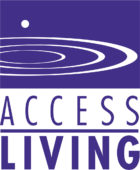The Americans with Disabilities Act 31 Years Later; Recommitting to the Work Ahead
As the 31st anniversary of the Americans with Disabilities Act (ADA) comes to a close, I find myself reflecting on how the ADA anniversary is an important day to connect with one another, and to recognize the progress made over the past three decades to advance accessibility and inclusion.
The ADA has been the spark of a global uplifting of human rights for people with disabilities, and it has provided so many opportunities for basic access that were previously denied. And yet, the ADA is only a start in addressing the many disparities faced by different groups of disabled people.
As an intern in Washington DC, I had the rare honor to be on the White House lawn, witnessing the ADA being signed into law. I had no idea at the time how it would transform the lives of millions of people with disabilities including myself as a wheelchair user.
The ADA means different things to many of us. While it has opened doors of accessibility and inclusion to transportation, education, public accommodations, recreation and so much more, there are still too many in our community whose lives have yet to be touched by the ADA’s promise.
The Covid-19 pandemic and economic crisis only amplified the disparities our community has long been working to address – racial inequities, poverty, needed investments in home and community-based services, the lack of affordable and accessible housing, discrimination against immigrants, the digital divide and inequities in healthcare, education, and more.
For more than forty years, Access Living has been an agent of change, using the ADA as a powerful tool to address these disparities. The work we do is not just on behalf those of us now living with disabilities, but for all of us who will likely acquire disabilities in the future.
The disability community cannot do this work alone. It is essential that all of us – government at every level, philanthropy, labor, business leaders and our ally justice movements, work together to dismantle the systemic barriers before us and to create a more just and equitable world for people with disabilities.
We stand on the shoulders of so many who worked on passing the ADA. Now, it’s our turn to take on the challenges that lie ahead and to create the accessible, inclusive world we envision.
